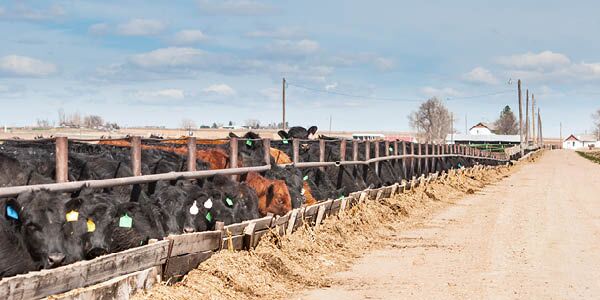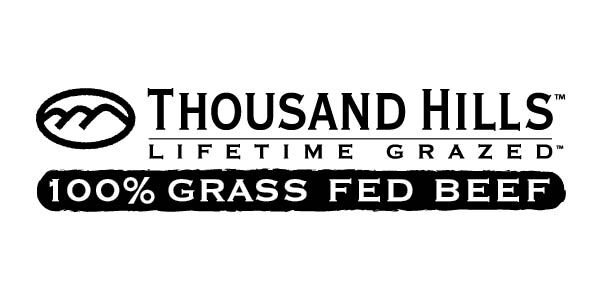Marketside Butcher Orgaiic Grass Fed Beef Boise Idaho

Would you believe that cattle kept in a feedlot and fed GMO-corn, soy, or spent GMO-distillers' grains could be called "grass fed?" Perhaps these cattle are even fed antibiotics to help speed their growth. Would you be amazed to hear that the USDA would allow these cattle to be labeled as "grass fed?" Increased consumer demand for products labeled as "grass fed" or "pasture raised" has resulted in more and more products making their way into the marketplace—despite a lack of transparency for the consumer about what is actually meant by the label termgrass fed. In fact there is a huge amount of discordance between what the consumer expects when they buy grass-fed beef and what the USDA allows to qualify as "grass-fed" beef.
Most of the beef consumed in the United States does indeed come from cattle that begin their lives on pasture. Typically, a calf will spend the first six months of its life on pasture before it is weaned from its mother and sent to a feedlot to be "finished" for about another six months on a diet of corn and other grains. Because most cattle are technically "grass fed" before going to the feedlots, anyone processing and selling meat from these animals can ask the USDA for permission to call their product "grass fed." In order to differentiate what is truly grass-fed beef from this less authentic product, consumers should look for beef labeled 100% grass fed , as this indicates that these animals were raised on grass for their entire lives after they were weaned from their mothers. But amazingly, even products labeled 100% grass fed may still take advantage of loopholes. The primary loophole is that the USDA has decided to allow cattle to be fed spent distillers' grains and still be considered 100% grass fed. Not only are distillers' grains an unnatural type of forage for cows to consume, but in order to feed cattle distillers' grains, the cows need to be kept in confinement—and this is completely acceptable under the USDA's definition of 100% grass fed.
What Makes Grass Fed Better?
Beef from cows allowed to graze and forage for their entire life is what most people think of when they hear the term grass fed. This is desirable because a natural diet of grasses changes the fatty acid profile and nutrient composition of the meat. While conventional beef raised on corn and soy has an omega-6:omega-3 fatty acid ratio of around 23:1, grass-fed beef has a 2:1 ratio—much closer to what is thought to be ideal for good health.[i] The healthier ratio of fatty acids is a direct result of the increased consumption of grass. Overconsumption of omega-6 fatty acids and a high omega-6:omega-3 ratio leads to inflammation and is associated with a host of modern diseases, including heart disease and weight gain; therefore, choosing food sources that have an optimal ratio are thought to be better for our health.[ii] In addition to the omega-6:omega-3 ratio, grass-fed beef is higher in other nutrients including zinc, CoQ10, L-carnitine, and vitamins A and E.[iii] Grass-fed beef also contains much higher levels of CLA, a fatty acid that has been shown to reduce body fat and increase muscle mass, as well as enhance the immune system.[iv]
While you expect that grass-fed beef is more nutritious than corn-fed beef, the feeding of distillers' grains could completely cancel out these benefits and it's quite misleading to the consumer. It should also be noted that organic beef is not always grass fed. Under USDA organic guidelines, cattle can be fed organic grains. So if you're really looking to benefit from the improved nutrient profile that results from cattle eating grass, make sure you're buying 100% grass-fed beef.
Isn't Beef Bad for the Environment?
There is no doubt that beef raised in feedlots and fed GMO-grains (that are also grown in an environmentally damaging fashion) is bad for the environment. However, when it comes to raising cattle on grasses and rangeland, it's an entirely different story, and in fact, is very beneficial for the environment. Managed grazing done in a thoughtful fashion helps restore soil health and encourages the growth of healthy grasslands. Experts in managed grazing have shown that putting animals back on the rangeland stimulates growth of grasses, fertilizes the land, and encourages microbial growth in the soil—all of which contribute to rebuilding healthy soil that is capable of pulling carbon dioxide out of the atmosphere and trapping it, ultimately helping to reduce CO2 levels in the atmosphere.[v] In order to properly manage grasslands and prevent overgrazing, animals must be moved in a fashion that mimics the movements of wild herds; in other words, the animals have to be moved frequently. Natural Grocers has chosen producers of grass-fed beef who move their cattle often, sometimes as often as three times per day.

Thousand Hills Cattle Company, Truly Grass Fedand Domestically Produced
Natural Grocers is proud to have partnered with Thousand Hills Cattle Company—a company that takes no shortcuts and uses no GMOs or distillers' grains in the raising of their 100% grass-fed cattle—for our fresh beef program. Our purchasing team spent a long time searching for a producer who wasn't taking advantage of any loopholes and met our other strict standards including no antibiotics, no artificial hormones, and no use of growth-promoting drugs, as well as produced all of their beef domestically.
According to many experts in the beef industry, the grass-fed beef market is being flooded with beef from South America, New Zealand, and Australia. The problem with this is two-fold: buying these products doesn't help American family farms, and because the cost of overseeing these producers is prohibitive, no one really knows exactly what sort of grazing practices are being used overseas. Thousand Hills sources its beef from farms throughout the Midwest and Great Plains, meaning that buying these products directly supports American farmers and regenerates American grasslands.
Most people who shop for grass-fed beef are doing so because they want something that is healthier for them, better for the planet, and/or supports small family farms. With Thousand Hills Beef, you're getting a product that does all three. Thousand Hills products can now be found at your local Natural Grocers and I can tell you from personal experience, it is delicious!
Source: https://www.naturalgrocers.com/article/your-grass-fed-beef-truly-grass-fed
Belum ada Komentar untuk "Marketside Butcher Orgaiic Grass Fed Beef Boise Idaho"
Posting Komentar